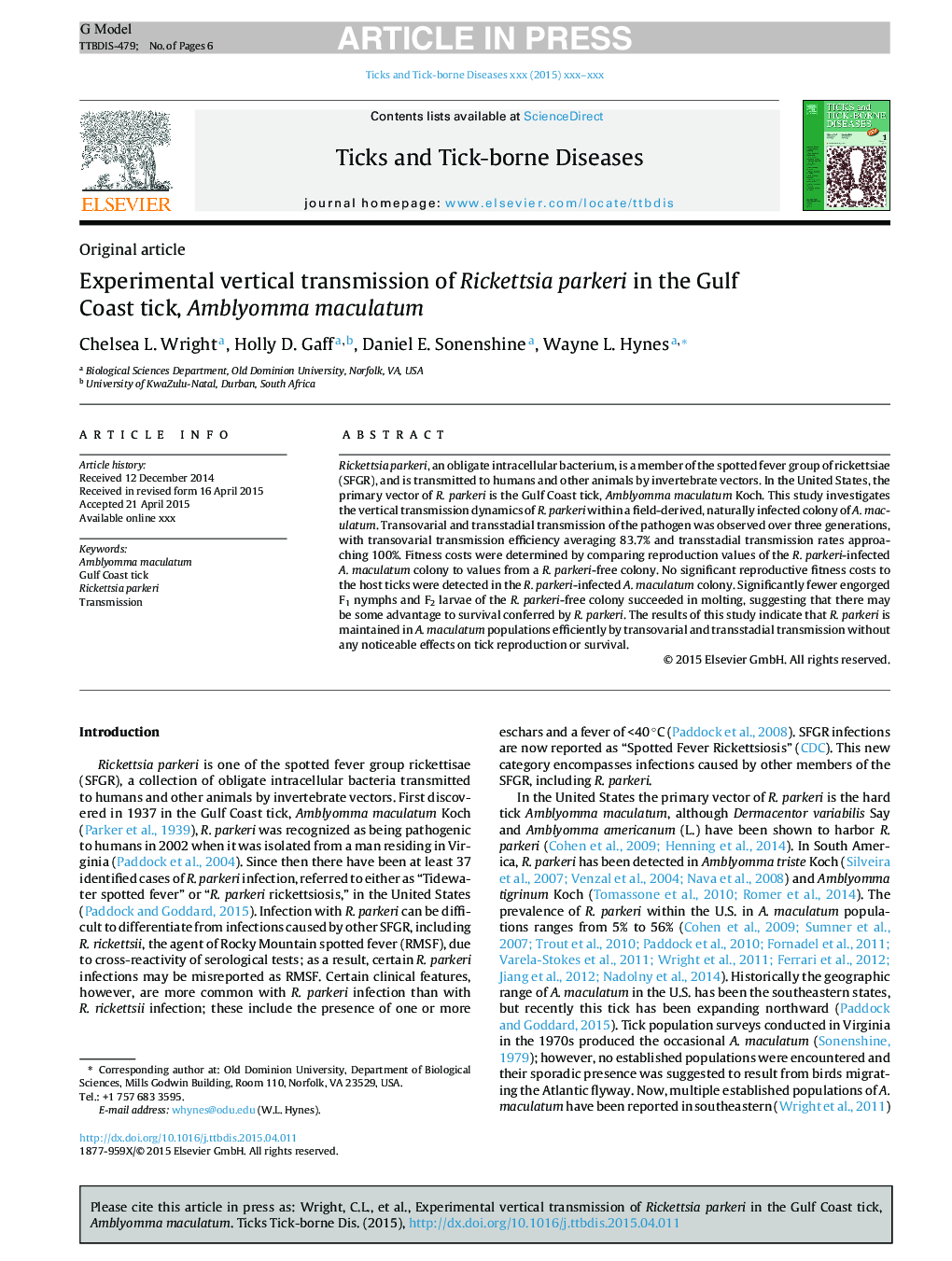| Article ID | Journal | Published Year | Pages | File Type |
|---|---|---|---|---|
| 5807231 | Ticks and Tick-borne Diseases | 2015 | 6 Pages |
Abstract
Rickettsia parkeri, an obligate intracellular bacterium, is a member of the spotted fever group of rickettsiae (SFGR), and is transmitted to humans and other animals by invertebrate vectors. In the United States, the primary vector of R. parkeri is the Gulf Coast tick, Amblyomma maculatum Koch. This study investigates the vertical transmission dynamics of R. parkeri within a field-derived, naturally infected colony of A. maculatum. Transovarial and transstadial transmission of the pathogen was observed over three generations, with transovarial transmission efficiency averaging 83.7% and transstadial transmission rates approaching 100%. Fitness costs were determined by comparing reproduction values of the R. parkeri-infected A. maculatum colony to values from a R. parkeri-free colony. No significant reproductive fitness costs to the host ticks were detected in the R. parkeri-infected A. maculatum colony. Significantly fewer engorged F1 nymphs and F2 larvae of the R. parkeri-free colony succeeded in molting, suggesting that there may be some advantage to survival conferred by R. parkeri. The results of this study indicate that R. parkeri is maintained in A. maculatum populations efficiently by transovarial and transstadial transmission without any noticeable effects on tick reproduction or survival.
Related Topics
Life Sciences
Agricultural and Biological Sciences
Animal Science and Zoology
Authors
Chelsea L. Wright, Holly D. Gaff, Daniel E. Sonenshine, Wayne L. Hynes,
